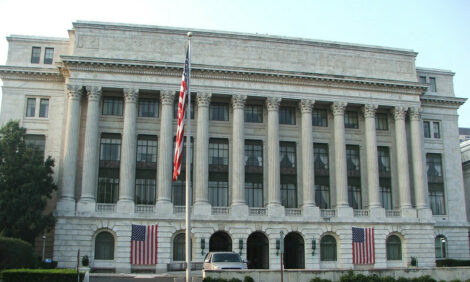



Cattle Corridor Districts Lose Shs600m Over Quarantine
UGANDA - Local authorities in the cattle corridor districts of Sembabule, Lyantonde, Gomba and Nakasongola have suffered a financial loss of Shs672 million in local revenue following the restriction on the slaughter, sale and transportation of cattle in the districts.In April, the government - through the Ministry of Agriculture, Animal Industry and Fisheries - declared quarantine in the three districts and indefinitely closed cattle markets in the areas to avert the spread of the foot and mouth disease.
Daily Monitor reports that the districts largely depend on cattle trade for revenue. Authorities from the three districts claim the prolonged quarantine has significantly affected their planned activities amid low funding from the central government.
Losses
According to Mr Ronald Katende, the Sembabule District revenue officer, the district had projected to realise Shs500 million from local revenue this financial year, where 60 per cent would come from cattle trade.
Mr Katende in a recent interview with Daily Monitor said the district has so far lost up to Shs150 million in taxes which have not been realised because livestock markets have remained closed since April.
"This financial year, we had projected to collect up to Shs300 million from livestock trade alone, but this can no longer be realised since the livestock markets were closed," Mr Katende said, adding: "We actually expect to lose more money if the quarantine remains in force."
In Lyantonde District, an estimated Shs100 million has not been realised, according to Mr Joseph Juuko, the secretary for finance who also doubles as the district vice chairperson.
"Our four major cattle markets which greatly contribute to local revenue have been closed for more than six months, exposing us to a loss of large sums of revenue, yet it had a lot to finance," Mr Juuko said.
However, Mr Juuko says some cattle traders are benefiting from the quarantine because despite the ban, they have continued to smuggle out cattle out of the quarantined areas and are not charged taxes.
"We are into the festive season where beef is on high demand but we are not getting any revenue from the cows being ferried out of the district," he adds.
In Gomba District, about Shs540 million was expected to be collected as locally raised revenue, according to the district 2017/18 budget performance report, with Shs334 million expected from livestock industry .
However, Mr Godfrey Kiviiri, the Gomba District chairperson said they have faced challenges of unstable local revenue as a result of outbreaks of animal diseases, which led to quarantine.
Gomba District has four major livestock markets which include; Kyaayi, Maddu, Kifampa and Kigezi where they were getting about Shs19 million every month.
But since the ban was imposed nine months ago, Mr Kiviiri says they have lost about Shs156 million in total.
"Our planned activities have been halted because we don’t have funds to run them, yet the central government funding has remained small to cater for such projects," Mr Kiviiri said.
He noted that livestock farmers have equally been affected because many can no longer buy acaricides to either spray their animals or pay school fees for their children because they solely depend on income from the livestock.
In Nakasongola, the district is on average losing about Shs33m per month in local revenue as a result of the cattle quarantine with an estimated Shs266m reportedly lost between May and November this year, according to Mr Sam Kigula, the district chairperson.
The district has an estimated 268,000 head of cattle and more than 1,000 animals are transported out of the district to different markets daily.
As is the case with other cattle corridor districts, more than 85 per cent of residents in Nakasongola derive a livelihood from livestock farming.
In a bid to end the quarantine, the Sembabule District production officer, Dr Emanuel Kawooya said, a technical team is working with the various residents in the cattle corridor districts to ensure that the spread of the disease is reduced.
We hope to have an evaluation report by end of December and that is when we would determine whether the quarantine is lifted or not," Mr Kawooya said.
Vaccination
Although vaccination has been done in most of the districts, the State minister for Animal Husbandry, Ms Joy Kabatsi, said some districts defied the ban and continued to bring cattle from Tanzania, where the disease reportedly came from thus affecting the fight against foot and mouth disease.
No declaration
Though farmers’ livelihood and district local revenue have greatly been affected by the quarantine, the minister noted that the quarantine cannot be lifted before her ministry’s technical team declares that the areas are now disease free.
"We understand our people have been haunted by the quarantine, but it cannot be lifted before establishing that the areas are disease free," Ms Kabatsi said in a telephone interview regarding
Foot and mouth disease outbreak that happened at a time when farmers were still battling with acaricide resistant ticks which caused east coast fever that claimed droves of animals in the cattle corridor districts.
The foot and mouth virus causes high fever in cattle which is followed by inflammations and occurrence of blisters inside mouths of infected animals.
The virus may also cause the hooves to rupture, inducing lameness.
TheCattleSite News Desk


